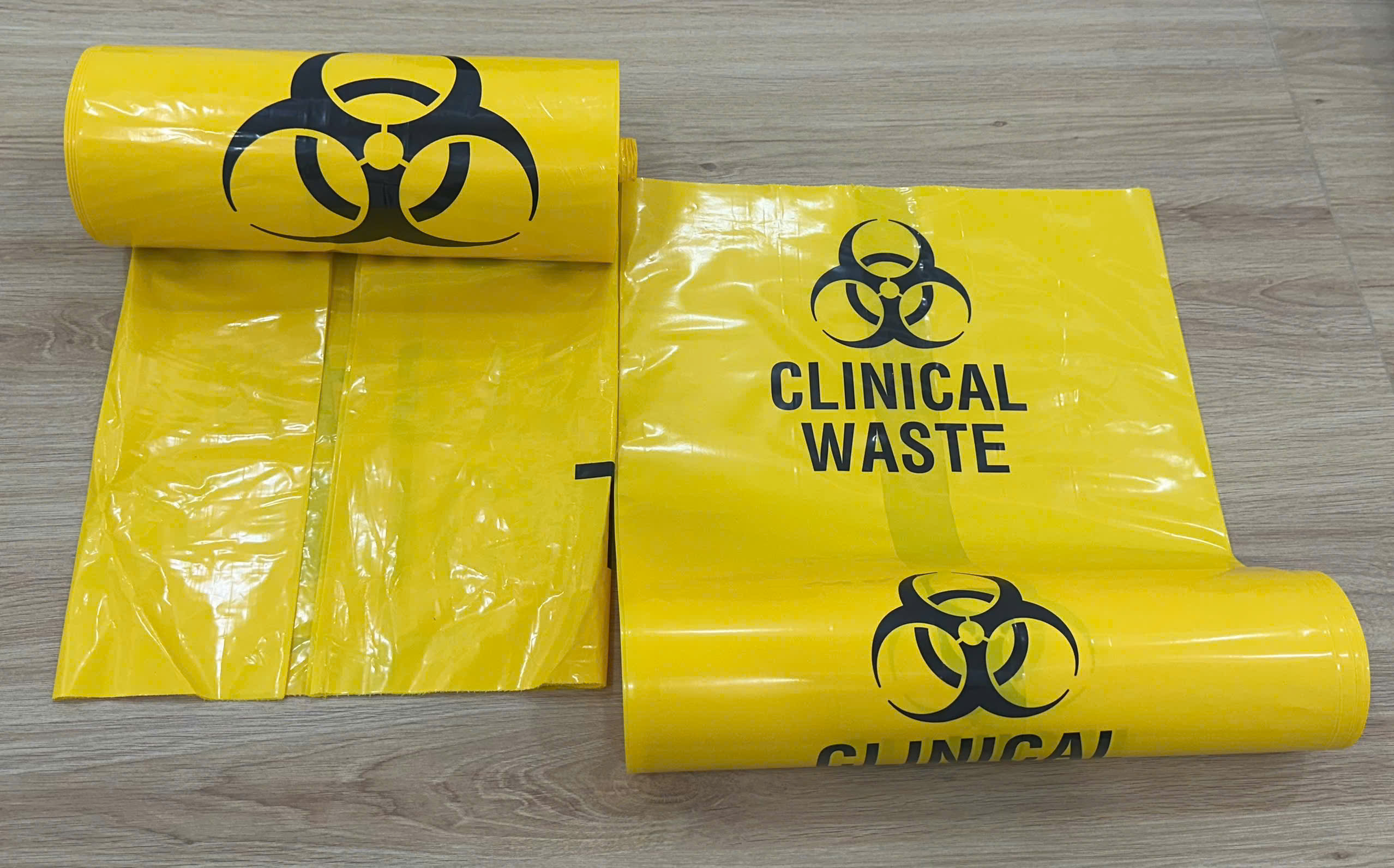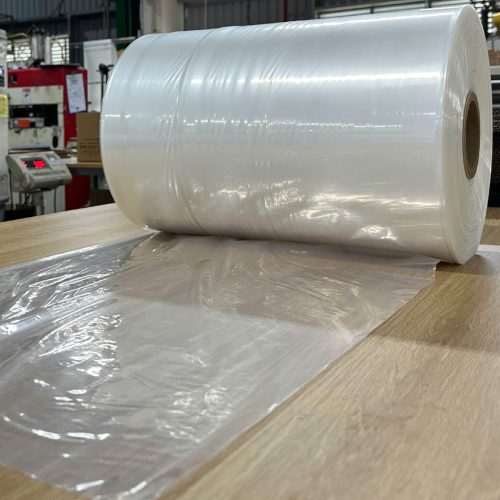In today’s fast-paced world of logistics and manufacturing, efficient packaging solutions are more critical than ever. Among the myriad options available, Stretch Film has emerged as an indispensable tool, offering unparalleled flexibility, security, and cost-effectiveness in the packaging industry. This comprehensive guide delves into the multifaceted world of stretch film, exploring its properties, applications, economic benefits, innovative trends, and future prospects. Whether you’re a logistics professional, manufacturer, or sustainability advocate, understanding the nuances of stretch film will empower you to optimize your supply chain and embrace environmentally responsible practices.
Understanding Stretch Film – The Backbone of Modern Packaging Solutions

Stretch Film is not just another plastic wrap; it’s a revolutionary material that has transformed how products are secured, protected, and transported across industries worldwide. Its unique elasticity allows it to conform tightly around items of various shapes and sizes, providing stability during transit and storage. The core of its functionality lies in its composition—primarily made from polyethylene (PE) or linear low-density polyethylene (LLDPE)—which offers excellent durability and flexibility.
This section explores the fundamental aspects that make stretch film an essential asset in the packaging landscape. From its manufacturing process to its physical properties, we will unravel what sets stretch film apart from traditional wrapping methods and why it continues to gain popularity among businesses aiming for efficiency and safety.
The Composition and Manufacturing Process of Stretch Film
The effectiveness of stretch film begins with its materials and production techniques. Most stretch films are manufactured using either high-quality polyethylene (PE) or Linear Low-Density Polyethylene (LLDPE), each contributing specific characteristics such as clarity, strength, and stretchability.
During manufacturing, these polymers are extruded into thin films through a process called blown or cast extrusion. The resulting film is then stretched and cooled rapidly to produce a material with remarkable elastic properties. Additives like UV stabilizers, anti-static agents, and adhesives may be incorporated to enhance performance features tailored to specific needs.
Personal insights suggest that advances in polymer technology have allowed manufacturers to create films with increased tensile strength and elongation capabilities, which directly impact their performance under load. These innovations contribute significantly to reducing waste and increasing reuse potential, aligning with global sustainability goals.
Key Physical Properties of Stretch Film
Understanding the physical properties of stretch film illuminates why it’s favored over other packaging materials. Key properties include:
- Elongation Capacity: The ability to stretch up to 200-300% without tearing, enabling secure wrapping of irregularly shaped loads.
- Tensile Strength: Resistance to punctures and tears, ensuring durability during handling and transportation.
- Adhesion: The cling property that allows the film to stick to itself, forming a tight, cohesive wrap.
- Transparency: Clear material that facilitates visual inspection of packaged goods without unwrapping.
- Elasticity: The capacity to revert to original shape after stretching, maintaining tension throughout the shipment process.
From a personal perspective, these qualities combine to create a versatile packaging solution that adapts effortlessly to diverse product dimensions while maintaining consistent protection. The ability to customize stretch levels further enhances its utility across sectors.
Types of Stretch Film: Cast vs. Blown and Specialty Films
The market offers different types of stretch films, each optimized for specific applications. The two primary categories are cast and blown films, with specialty variants expanding functionalities.
- Cast Stretch Film: Known for its superior clarity and uniform thickness, cast films are produced by cooling the extruded film quickly on a chilled roller. They provide excellent cling and are ideal for palletizing in retail or food industries where visibility matters.
- Blown Stretch Film: Manufactured through a blown extrusion process, these films tend to be thicker and more rigid, offering higher puncture resistance. They are suitable for heavy-duty industrial applications requiring robust protection.
- Specialty Films: Innovations include machine-direction orientated (MD) films for increased strength, pre-stretched films that require less effort during application, and biodegradable options designed for eco-conscious customers.
Industry experts emphasize that selecting the right type hinges on factors like load weight, environmental conditions, and sustainability targets. Understanding these distinctions enables companies to optimize their packaging strategies effectively.
Applications and Benefits of Stretch Film – Protecting Goods While Saving Costs

Stretch film’s adaptability extends beyond mere containment; it significantly influences overall logistical efficiency, safety, and environmental impact. Its widespread use spans various industries—from food processing to automotive parts—and continues to evolve with technological advancements.
Implementing stretch film can lead to substantial operational benefits, including enhanced load stability, reduced damage, and lowered packaging costs. Its role in safeguarding products during long-distance transportation makes it an invaluable component of modern supply chains.
Primary Industry Uses of Stretch Film
The versatility of stretch film ensures its relevance across multiple sectors. Here are some prominent applications:
Pallet Wrapping in Logistics and Warehousing
The most common use of stretch film is securing palletized loads. Its elastic nature allows it to conform tightly around stacked goods, preventing shifting, falling, or tampering during transit.
In warehouse environments, stretch film reduces the need for additional securing devices like straps or banding. A personal insight reveals that warehouses adopting pre-stretched or hand-applied films experience significant labor savings and faster processing times.
Food Industry Packaging and Preservation
Food products benefit immensely from stretch film’s protective qualities. It acts as a barrier against dust, moisture, and bacteria, ensuring hygiene and freshness.
Additionally, specialty films designed for food contact are often transparent, allowing consumers to inspect products visually without unwrapping, which boosts confidence and satisfaction.
Industrial and Heavy-Duty Applications
Heavy machinery, automotive parts, and building materials often require durable wrapping solutions capable of withstanding rough handling and environmental factors. Blown stretch films with high puncture resistance meet these demands effectively.
Industry experts note that combining stretch film with other packaging methods can further enhance protection, especially when dealing with fragile or sensitive components.
Environmental and Safety Benefits of Using Stretch Film
While traditionally plastic-based, recent innovations aim to address environmental concerns associated with stretch film usage. Biodegradable and recyclable variants are increasingly in demand, aligning with corporate social responsibility mandates.
In terms of safety, stretch film minimizes manual handling risks by reducing the need for complex tying and strapping, thereby lowering injury rates. Its ability to hold loads securely also diminishes accidental spills or damage, protecting workers and transport vehicles.
Personal analysis suggests that integrating sustainable stretch films into existing systems not only benefits the environment but also enhances brand image and customer loyalty.
Cost Savings and Economic Impacts
Beyond operational efficiencies, stretch film delivers tangible financial advantages. Its lightweight nature and ease of application reduce packing labor and material costs.
Quantitative case studies highlight that companies switching from traditional wrapping methods to stretch film observe up to 20-25% reduction in packaging expenses. Additionally, improved load stability minimizes product loss and damages, translating into lower insurance premiums and fewer claims.
The upfront investment in quality stretch film pays off through long-term savings, making it a strategic choice for cost-conscious organizations seeking competitive advantages.
Innovating with Stretch Film – Emerging Trends and Technological Advances
The landscape of stretch film is continuously transforming driven by innovations in material science, sustainability initiatives, and automation integration. Manufacturers are investing heavily in RD to develop smarter, greener, and more efficient solutions that meet evolving market demands.
This section explores groundbreaking developments shaping the future of stretch film, from eco-friendly materials to intelligent packaging systems, highlighting how these advancements elevate supply chain resilience and environmental stewardship.
Eco-Friendly and Sustainable Stretch Films
Environmental concerns are at the forefront of packaging innovation. Researchers and manufacturers are pioneering biodegradable, compostable, and recyclable stretch films that retain performance standards while reducing ecological footprints.
Personal insights underscore that adopting these alternatives not only aligns with regulatory pressures but also enhances corporate reputation. Companies embracing sustainability report increased consumer trust and access to eco-conscious markets.
Biodegradable Polymers and Recyclability
New formulations leverage plant-based polymers such as polylactic acid (PLA), which decompose naturally in composting conditions. Additionally, efforts to improve recyclability focus on developing mono-material films that simplify sorting and reprocessing.
Multi-Layered Eco-Films
Innovative multi-layer films combine traditional polymers with biodegradable layers, balancing durability with environmental compatibility. This approach ensures functional integrity without sacrificing sustainability.
Automation and Smart Packaging Technologies
Automation integration revolutionizes stretch film application processes, boosting productivity and consistency. Robotic systems equipped with advanced sensors enable precise, rapid wrapping, minimizing waste and labor costs.
Moreover, the advent of smart stretch films embedded with RFID tags or sensors provides real-time tracking, load integrity monitoring, and condition assessment during transportation.
Industry experts believe these innovations foster transparency, security, and proactive management of shipments. They also facilitate data-driven decision-making for supply chain optimization.
Customization and Adaptability in Stretch Film Design
Personalized packaging solutions tailored to specific products and industries are gaining traction. Advanced manufacturing techniques allow for custom thicknesses, adhesion levels, and printed designs, adding value beyond basic containment.
For instance, retail brands incorporate branding elements into stretch film, turning packaging into marketing assets. Similarly, protective coatings or antimicrobial properties are integrated into films for specialized applications.
The Future Outlook: Sustainability Meets Technology
As the industry moves forward, the convergence of environmentally friendly materials and cutting-edge technology promises to redefine what stretch film can achieve. Expectations include increased adoption of biodegradable variants, smarter application systems, and circular economy models that emphasize reuse and recycling.
These trends reflect a broader shift towards responsible manufacturing and logistics, where efficiency and sustainability are mutually reinforcing objectives.
## Conclusion
Stretch film stands at the intersection of innovation, sustainability, and operational excellence in modern packaging. Its versatile composition and adaptable properties enable industries worldwide to secure, protect, and streamline their supply chains efficiently. As technological advancements continue to push the boundaries—from eco-friendly materials to intelligent, automated systems—the future of stretch film looks promising. Embracing these innovations not only fosters economic benefits but also demonstrates a commitment to environmental responsibility, ensuring that this vital packaging solution remains relevant and impactful for years to come.




